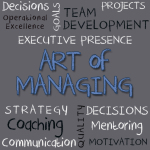 Most businesses and most management teams flail and fail when it comes to the work of strategy.
Most businesses and most management teams flail and fail when it comes to the work of strategy.
In today’s world, where the long-cycle strategy process has been replaced by short-bursts of experimentation and iteration, it’s essential to reduce the fail and flail by attacking the root causes of so much dysfunction with this work. And, it’s not the complexity of the new initiatives that derail these teams. Rather, it’s a lack of discipline and a deficit of resolve on the part of the primary actors to do what is necessary to improve the odds of succeeding.
Watch Out for These Pitfalls:
The debate around direction (strategy) is almost always a tug-of-war, with those firmly married to this bygone era, resisting those who see the need to throw away that familiar security blanket in pursuit of new. These situations often end up as an Us-Versus-Them contest, with one side waving the flag of culture and tradition and the other side shouting that it doesn’t matter. The history isn’t the issue. It’s part of the firm’s legacy and culture and it should be celebrated but not endlessly emulated or repeated. Once the fracture in the culture opens up, this is difficult to repair and it creates a drag on progress in finding much needed new growth opportunities.
Another common dilemma is the debate over disconnected vectors. One group is passionate about the opportunities in markets A & B and requires investment to realize the benefits of those markets. Another group looks at Y & Z as the logical next steps and requires their own new investment to move forward. Instead of making the hard but critical call, senior executives often broker a compromise and fund both, setting the stage for a Darwinian battle for survival. This “cut the baby in half,” where the baby is precious resources and capital, practically guarantees failure for both initiatives.
 Yet another tripping point for senior management teams comes from the passive-aggressive lone-holdout. In my experience, the name and role changes, but the behaviors remain the same. Whether it’s the head of sales or marketing or research and development, this individual views himself/herself as the protector of the sacred status quo. He/she plays along in the strategy games, often extending debates and withholding commitment. They become particularly dangerous when they quietly but maliciously work to torpedo the initiative by withholding resources and derailing key supporting projects. These individuals are often master politicians, deftly navigating and neutralizing much deserved criticism.
Yet another tripping point for senior management teams comes from the passive-aggressive lone-holdout. In my experience, the name and role changes, but the behaviors remain the same. Whether it’s the head of sales or marketing or research and development, this individual views himself/herself as the protector of the sacred status quo. He/she plays along in the strategy games, often extending debates and withholding commitment. They become particularly dangerous when they quietly but maliciously work to torpedo the initiative by withholding resources and derailing key supporting projects. These individuals are often master politicians, deftly navigating and neutralizing much deserved criticism.
All of the above is compounded when the individual sitting at the head of the table is uncertain over the right direction and unwilling to commit until the fog clears and the path becomes obvious. This hesitation is perceptible to everyone and easily exploited by those anchored to the status-quo.
This would be easy if it weren’t for the people.
7 Steps to Help the Senior Team Get it Right:
1. Get Outside Help. Yes, I’m biased, but the bias comes from decades of beating my head against the wall as a member of senior management teams trying to cut through all of the above. The right guide will shave person-years off of the duration of these initiatives and dramatically improve your odds of success. When choosing a guide, select someone with some gray or less hair from this process and beware of consultants bearing templates. There is no one template to get strategy right.
2. Conduct a Pre-Post Mortem on the Initiative. Ask, “when this succeeds, what will we have done right?” Model the success. Then ask, “If it fails, what will we have done wrong?” Leverage the output from these questions in forming and adopting a set of values that describes the essential and accepted behaviors.
3. Make Success or Failure Personal. In a variation of number two, ask everyone to codify in writing and then to verbalize, “At the end of this initiative, what will my teammates say that I did?” Everyone, involved, and especially the CEO, must participate. One team posted their planned contributions and behaviors in the designated “war room” and referenced them regularly.
4. Address the Elephants in the Room Early and Often. Remind everyone: Yes, this may mean a departure from the status quo. Yes, we will eventually have to structure to succeed. Yes, pet project are potentially vulnerable. Yes, we will make the hard decisions on what’s right for our firm, employees and stakeholders. Yes, we will ask outside opinions. Yes, you will be voted off the island if you violate the established values.
5. Respect the Legacy, but Don’t Anchor to It. Acknowledge that past approaches and legacy markets were the sources of growth that brought you here. Unless a clear case can be made for growth by extension in those arenas, it’s time to make some new opportunities and earn some new victories.
6. Decide How You Will Decide. Take time upfront to define the decision-making process. Too much work around strategy is prolonged by the lack of clear processes and approaches for this difficult but critical step.
7. It’s All About Execution—Build Discipline in Up-Front. Even when management teams get the advance work done in good form, there’s still the real work of bringing the ideas to life. Take the time to architect an execution program that allows for experimentation and learning and refinement. By the same token, build in the measures and reporting needed to quickly identify lack of commitment, poor coordination and the gravitational pull of resorting to old approaches.
The Bottom-Line for Now:
Humans by nature are consistent and predictable, particularly when it comes to the messy issues around change. While few would argue that change is the order of the day in our world, we’ve not yet adapted our hardware and software—our minds and hearts—to facilitate critical change and adaptation in our businesses. Today, strategy work is an iterative, short-cycle process that demands participation, discipline and resolve. The senior team and senior leaders must build and build-in practices that mitigate the human pitfalls around change and motivate experimentation and learning. And while we talk about strategy as an organizational issue, it’s really an intensely personal issue.
—
Art Petty serves senior executives and management teams as a performance coach and strategy facilitator. Art is a popular keynote speaker focusing on helping professionals and organizations learn to survive and thrive in an era of change. Additionally, Art’s books are widely used in leadership development programs. To learn more or discuss a challenge, contact Art.
- Invite Leadership Caffeine to Your Next Meeting! Invite Art to speak.
- Subscribe to the Leadership Caffeine Newsletter with subscriber only content. Register here








Leave A Comment